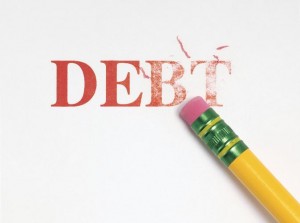Understanding Chapter 7 Bankruptcy
 Chapter 7 bankruptcy is what most people think of when they hear the word bankruptcy. Chapter 7 bankruptcy allows debtors who cannot afford to pay their debts to discharge some or all of their financial obligations. Discharging a debt means that the debtor is permanently shielded from liability for their debts. Certain debts cannot be discharged in bankruptcy. These include income tax, student loans, child support, and criminal fines. However, there are exceptions that may allow your nondischargeable debt to be discharged.
Chapter 7 bankruptcy is what most people think of when they hear the word bankruptcy. Chapter 7 bankruptcy allows debtors who cannot afford to pay their debts to discharge some or all of their financial obligations. Discharging a debt means that the debtor is permanently shielded from liability for their debts. Certain debts cannot be discharged in bankruptcy. These include income tax, student loans, child support, and criminal fines. However, there are exceptions that may allow your nondischargeable debt to be discharged.
In Chapter 7 bankruptcy, debtors list all of their assets in their bankuptcy schedules and then protect their property using exemptions. Exemptions are laws that protect assets from creditors. Each state has it’s own set of exemptions. In addition, some states allow their residents to use the federal exemptions set out in The Bankruptcy Code. If the debtor has property that cannot be protected by the exemptions available to them then the trustee may require that the property be handed over so that it can be liquidated and the proceeds paid to the creditors listed in the petition. In some states bankruptcy debtors give up a lot of property. However, in Texas debtors are able to use either the federal exemptions or the state exemptions. These exemptions allow a great deal of flexibility in protecting assets. As a result, there is very little liquidation in Chapter 7 bankruptcy cases filed in Texas.
The entire process, from filing the bankruptcy petition until discharge, usually takes between four and five months. During the case the debtor meets with a trustee. This meeting is referred to as the 341 meeting of creditors and it generally lasts between five and fifteen minutes. This meeting usually takes place between thirty and forty-five days after the case is filed. Despite the name, creditors rarely attend these meetings. In most cases this is the only formal hearing that takes place. Debtors rarely ever see the inside of a courtroom in Chapter 7 bankruptcy cases filed in north Texas.
After the 341 meeting, the debtor must wait sixty days to allow the creditors an opportunity to review the documents filed in the bankruptcy case. At the end of the sixty days the trustee will request that the debtor be discharged from bankruptcy. A bankruptcy judge will sign a discharge order and the case is closed soon after.
This information applies to Chapter 7 bankruptcy cases filed in Dallas, Plano, and other north Texas communities. Please contact a local bankruptcy lawyer for more information about filing Chapter 7 bankruptcy where you live.